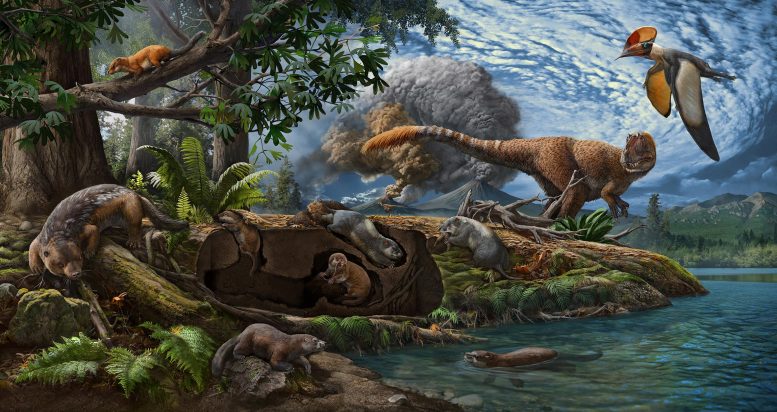
The dioramic landscape illustrates the Early Cretaceous Jehol Biota with emphasis on mammaliamorphs. Credit: © Chuang Zhao
120-million-year-old animals evolved “scratch-digging” traits independently.
Paleontologists have discovered two new species of mammal-like, burrowing animals that lived about 120 million years ago in what is now northeastern China. The new species, described today in the journal Nature, are distantly related but independently evolved traits to support their digging lifestyle. They represent the first “scratch-diggers” discovered in this ecosystem.
“There are many hypotheses about why animals dig into the soil and live underground,” said lead author Jin Meng, a curator in the American Museum of Natural History’s Division of Paleontology. “For protection against predators, to maintain a temperature that’s relatively constant — not too hot in the summer and not too cold in the winter — or to find food sources like insects and plant roots. These two fossils are a very unusual, deep-time example of animals that are not closely related and yet both evolved the highly specialized characteristics of a digger.”
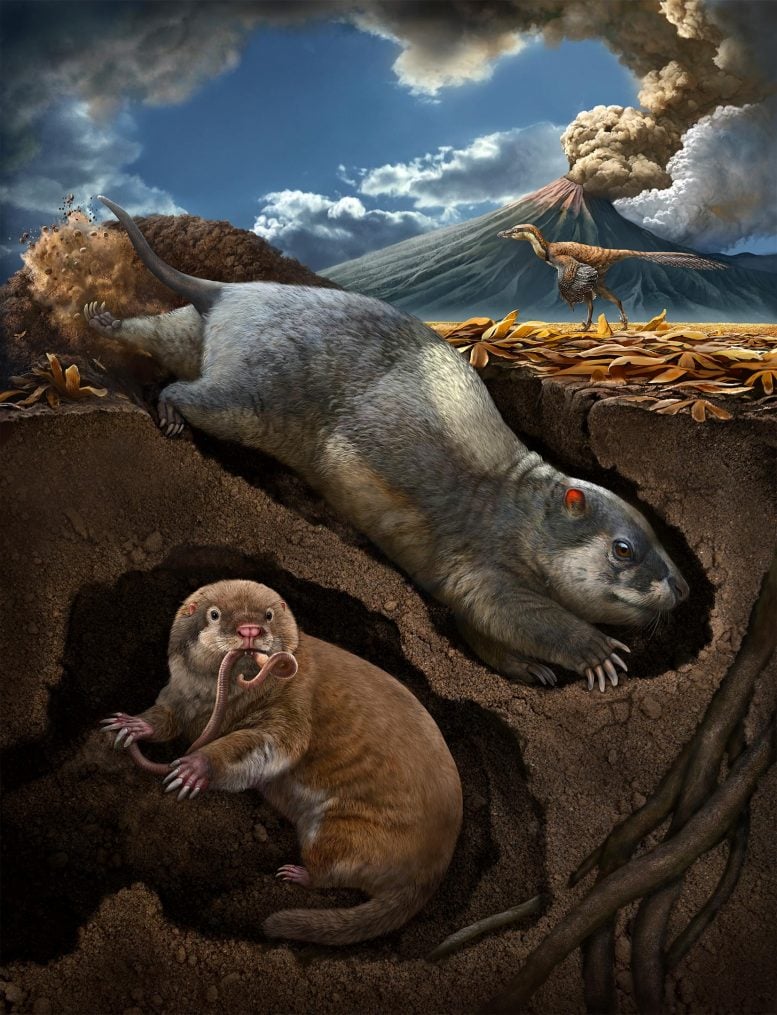
This portrait shows the tritylodontid Fossiomanus sinensis (upper right) and the eutriconodontan Jueconodon cheni in burrows; both lived in the Early Cretaceous Jehol Biota (about 120 million years ago), northeastern China, and showed convergent skeletal features adapted to the fossorial lifestyle. Credit: © Chuang Zhao
The fossil mammaliamorph species — predecessors to mammals — were discovered in the Jehol Biota, which represents the Early Cretaceous epoch, about 145 to 100 million years ago. One is a mammal-like reptile called a tritylodontid and is the first of its kind to be identified in this biota. About a foot in length, it was given the name Fossiomanus sinensis (Fossio, “digging” and manus “hand;” sinensis, “from China”). The other is named Jueconodon cheni (Jue, “digging” — Chinese pinyin — and conodon “cuspate tooth”; cheni for Y. Chen, who collected the fossil). It is a eutriconodontan, a distant cousin of modern placental mammals and marsupials, which were common in the habitat. It is about 7 inches (18 centimeters) long.
Mammals that are adapted to burrowing have specialized traits for digging. The researchers found some of these hallmark features — including shorter limbs, strong forelimbs with robust hands, and a short tail — in both Fossiomanus and Jueconodon. In particular, these characteristics point to a type of digging behavior known as “scratch digging,” accomplished mainly by the claws of the forelimbs.
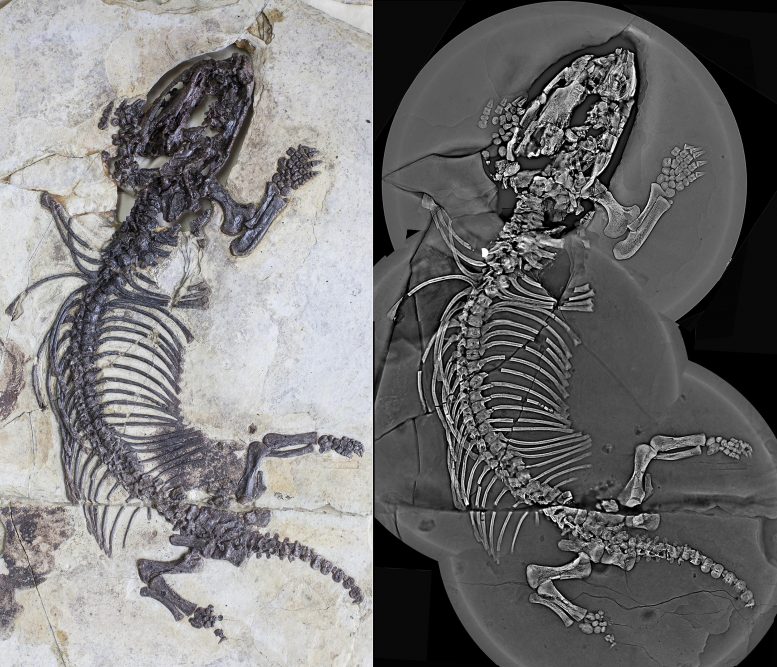
The holotype specimen of Fossiomanus sinensis. Optical image (left) and composite computed laminography image. Credit: J. Meng © AMNH
“This is the first convincing evidence for fossorial life in those two groups,” Meng said. “It also is the first case of scratch diggers we know about in the Jehol Biota, which was home to a great diversity of life, from dinosaurs to insects to plants.”
The animals also share another unusual feature: an elongated vertebral column. Typically, mammals have 26 vertebrae from the neck to the hip. However, Fossiomanus had 38 vertebrae — a staggering 12 more than the common state — while Jueconodon had 28. To try to determine how these animals got their elongated trunks, the paleontologists turned to recent studies in developmental biology, finding that the variation could be attributed to gene mutations that determine the number and shape of the vertebrae in the beginning of the animals’ embryotic development. Variation in vertebrae number can be found in modern mammals as well, including in elephants, manatees, and hyraxes.
Reference: “Fossoriality and evolutionary development in two Cretaceous mammaliamorphs” by Fangyuan Mao, Chi Zhang, Cunyu Liu and Jin Meng, 7 April 2021, Nature.
DOI: 10.1038/s41586-021-03433-2
Other authors on the study include Fangyuan Mao from the Chinese Academy of Sciences and the American Museum of Natural History, Chi Zhang from the Chinese Academy of Sceinces, and Cunyu Liu from the Beipiao Pterosaur Museum of China.
This study was supported in part by the National Natural Science Foundation of China, grant no.s 41688103 and 42072002; the Chinese Academy of Sciences Strategic Priority Research Program, Youth Innovation Promotion Association, and 100 Young Talents Program; and the Kalbfleisch Fellowship of the American Museum of Natural History’s Richard Gilder Graduate School.


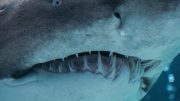
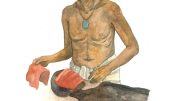
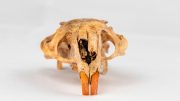
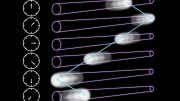



Be the first to comment on "Paleontologists Discover Two Unusual New Species of Ancient, Burrowing Mammal Ancestors"